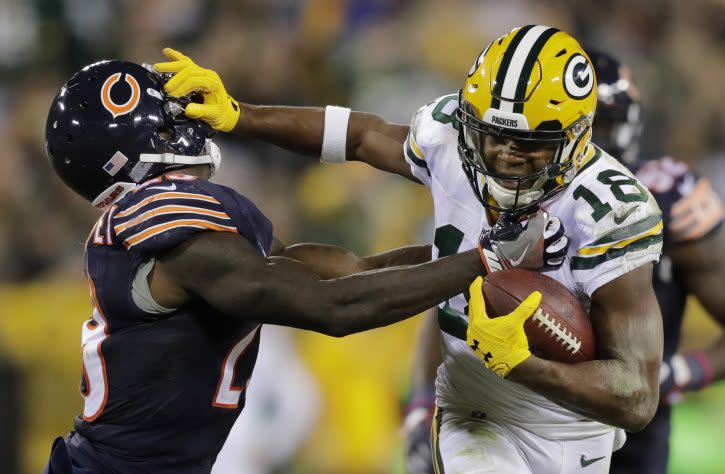Could Running Back Injuries Actually Benefit Packers’ Offense?
One the biggest story lines of the entire NFL season thus far has been, “What’s wrong with the Green Bay Packers?”
Fans have become accustomed to seeing a high-powered, potent offense throughout the years, led by two-time MVP quarterback Aaron Rodgers, with a plethora of weapons at his disposal.
Beginning midway through the 2015 season, however, and lingering through most of the current campaign so far, the offense has been sputtering. Rodgers has been uncharacteristically inaccurate, receivers have had trouble getting open, and the play-calling by head coach Mike McCarthy has seemed tired and predictable.
And here comes the injury to insult…
Running backs Eddie Lacy and James Starks both have significant injuries causing them to miss multiple weeks, and in Lacy’s case, probably the rest of the season. Those injuries have prompted GM Ted Thompson to climb out of his comfort zone and make an in-season trade, sending a seventh round draft pick to Kansas City for running back Knile Davis, and to also promote rookie Don Jackson from the practice squad.
In their week 7 game last Thursday evening, however, the Packers showed that they also have other options.
With the inexperience of Jackson and the unfamiliarity of Davis, the Packers utilized wide receiver Ty Montgomery heavily out of the backfield, and it seemed to rejuvenate a seemingly stagnant offense.
McCarthy implemented a short passing game as an extension of the running game to compensate for a lack of healthy running backs. In doing so, Rodgers set a franchise record for completions in a game with 39, and three receivers had 10+ catches, as Davante Adams led the team with 13 receptions for 132 yards and 2 touchdowns.
Montgomery and Randall Cobb routinely beat coverage to haul in 10 and 11 receptions respectively, out of the slot, as well as the backfield. Montgomery also ran the ball nine times for 60 yards.
Several offensive looks, especially when using five receivers in a spread formation, were reminiscent of Rodgers’ heyday of 2010-2011, when the “Big 5” formation featured Jordy Nelson, Greg Jennings, Jermichael Finley, Donald Driver, and James Jones.
This offense has a long way to go to reach that one, but the components might be there.
For his part, Rodgers still has some work to do. His first half was forgettable, which could be expected when implementing virtually a new offensive scheme in three days. However, he continues to miss some open receivers, made more poor throws, and still seems to not trust the downfield game – at all. Whether it’s his lack of confidence in himself to get the ball where it needs to be, or in his receivers to catch it, Rodgers clearly remains hesitant to attack defenses beyond 30 yards.
For this game, however, the Packers were forced to innovate. They were forced to open up the playbook and utilize looks and formations inexplicably missing for too long.
Yes, it was the Bears and their 30th ranked defense.
Yes, Starks will be returning in about a month, Davis and Jackson will eventually be more involved, and throwing the ball 54 times will not be sustainable moving forward.
However, for an offense that had been figured out by the rest of the league, and a head coach that was too proud and stubborn to change it, the recent brash of injuries has prompted some sorely needed adjustments.
Adjustments that for quite some time Packer fans have been waiting for.
The post Could Running Back Injuries Actually Benefit Packers’ Offense? appeared first on Cover32.



